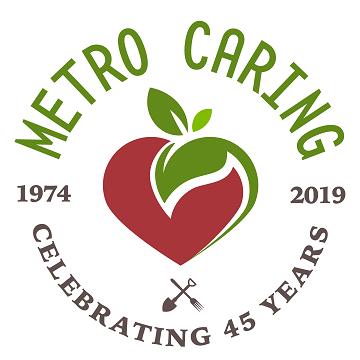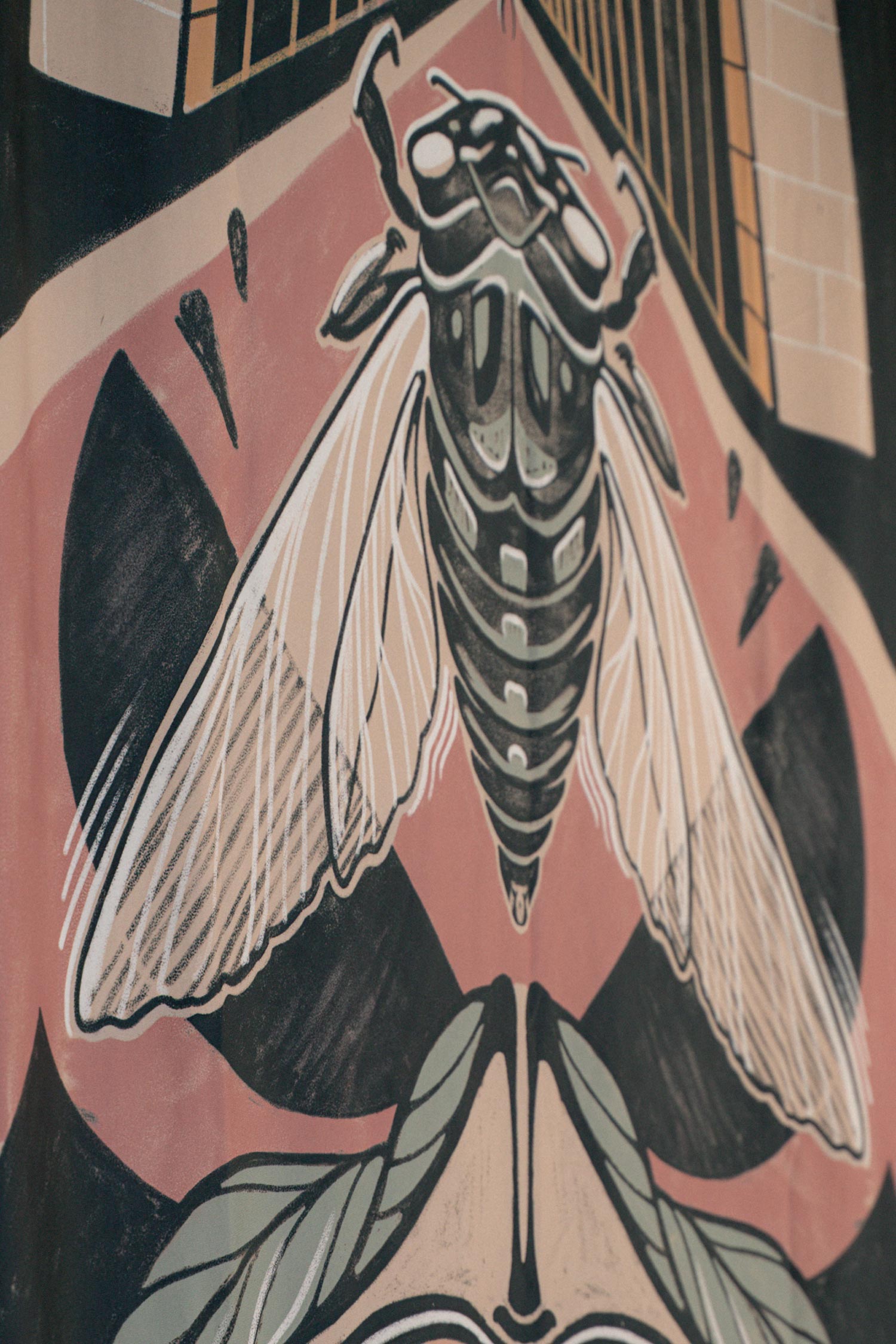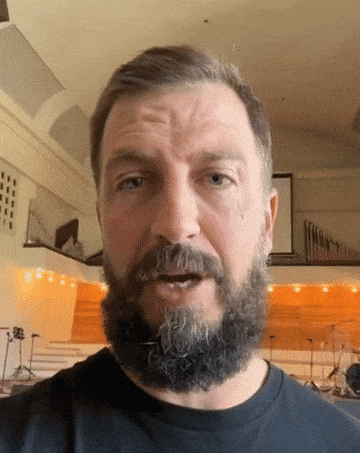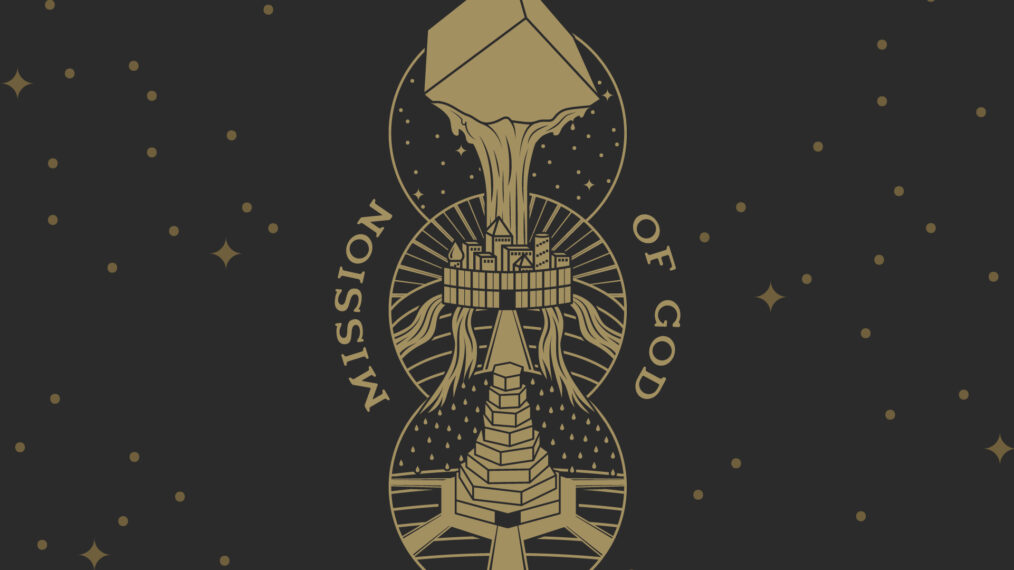
Mission of God Artwork
Our artwork for the ongoing Mission of God course is an illustration by Bruce Butler. Three overlapping circles contain depictions of three cities (from top to bottom): the heavenly Jerusalem as described in Revelation 21, the “City on a Hill” as described in Matthew 5, and the Tower of Babel as described in Genesis 11. The cities are connected by a depiction of the River of Life (Revelation 22). This illustration reads in two directions—from top to bottom and from bottom to top.
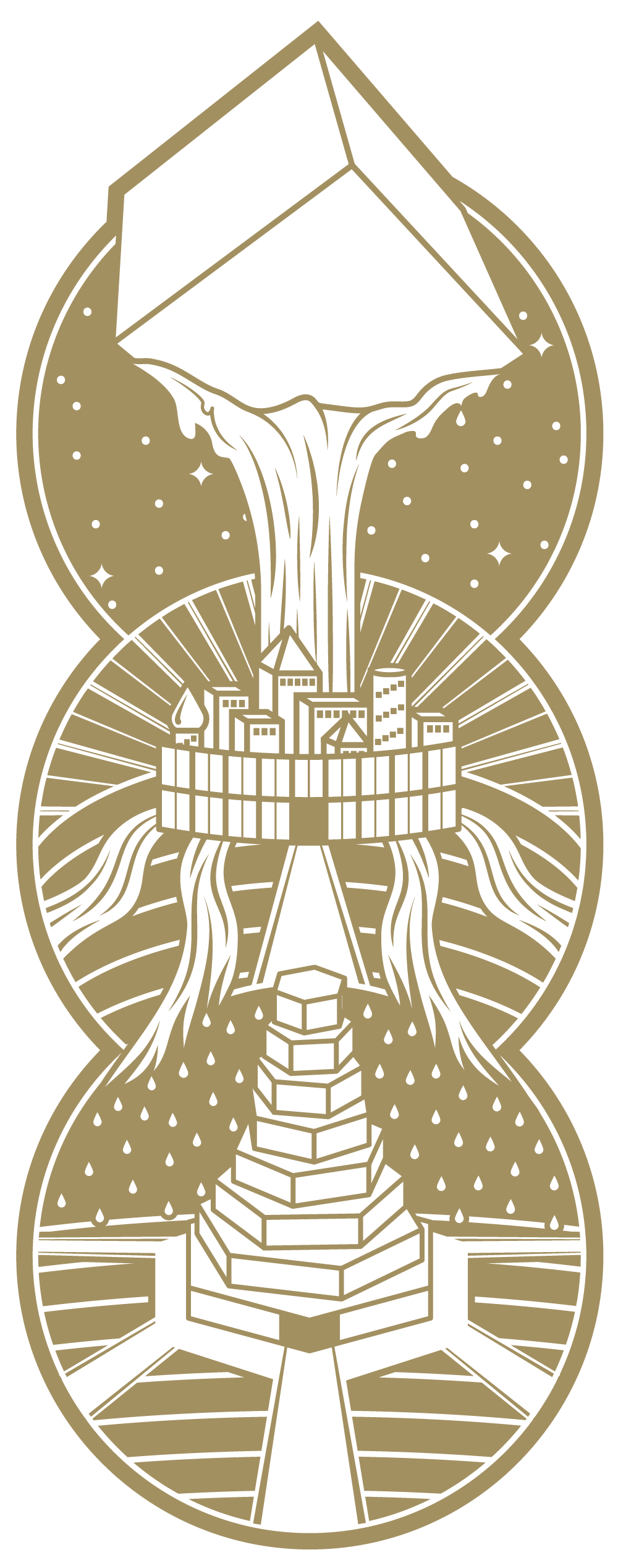 Read from bottom to top, the humanity-wide quest to live a meaningful life in a broken world starts by default at the Tower of Babel. If we are not working towards God’s mission, the next mission we pursue is our own.
Although we may be able to do incredible things as individuals or as a culture, the charge to mankind was to image God in the world, not simply to image ourselves. In grace to us, God breaks up our godless work. Jesus comes with a new city in mind, a “city on a hill” that “cannot be hidden.” We are invited to be members of this city, displaying Jesus’ upside-down kingdom in the sight of all people. In ironic contrast to Babel (a city that wanted its works to be widely visible but was then abandoned at God’s decree), Jesus expressly charges the city on a hill to have its good works seen! However, it is for the glory of “your Father who is in heaven.” Lastly, we are invited higher again through Jesus’ vision to John of the heavenly Jerusalem, a “cube of meeting” that represents the holy of holies in the temple. The city on a hill of our present age ultimately becomes the heavenly Jerusalem, where heaven and earth finally meet in fullness.
Read from bottom to top, the humanity-wide quest to live a meaningful life in a broken world starts by default at the Tower of Babel. If we are not working towards God’s mission, the next mission we pursue is our own.
Although we may be able to do incredible things as individuals or as a culture, the charge to mankind was to image God in the world, not simply to image ourselves. In grace to us, God breaks up our godless work. Jesus comes with a new city in mind, a “city on a hill” that “cannot be hidden.” We are invited to be members of this city, displaying Jesus’ upside-down kingdom in the sight of all people. In ironic contrast to Babel (a city that wanted its works to be widely visible but was then abandoned at God’s decree), Jesus expressly charges the city on a hill to have its good works seen! However, it is for the glory of “your Father who is in heaven.” Lastly, we are invited higher again through Jesus’ vision to John of the heavenly Jerusalem, a “cube of meeting” that represents the holy of holies in the temple. The city on a hill of our present age ultimately becomes the heavenly Jerusalem, where heaven and earth finally meet in fullness.
Read from top-to-bottom, the River of Life flows from the heavenly Jerusalem down onto the City on a Hill. This city acts as a watershed, and a “preview” of this river is precipitated to the world through it. Two things are intended in this illustration. First, God abundantly provides from heaven for those who seek to be on His mission. For example, we have the Holy Spirit, we have His incredible promises through His Word, and we are on mission within a community and inspired by the faithful before us. Second, the world that is not yet on mission with God receives a sort of gracious, River of Life “rain” by the faithfulness of God’s people as we seek to image Him. Though far different than drinking from the river, feeling its mist makes the human heart yearn for more. “Therefore, we are ambassadors… God making His appeal…” (2 Corinthians 5:20).
Lastly, the circles overlap as a way to illustrate that we are truly “residents” of all three cities. We often pursue our own missions like the people of Babel, and the “rain” of the River of Life is for our coming-to. We likewise often join Jesus in His mission and demonstrate Him to the world, empowered by heaven and its King. Ultimately, “we seek the city that is to come” (Hebrews 13:13), to which we belong as a result of Jesus’ work, enjoying Him and His completed mission until we drink straight from the river with all the redeemed.

